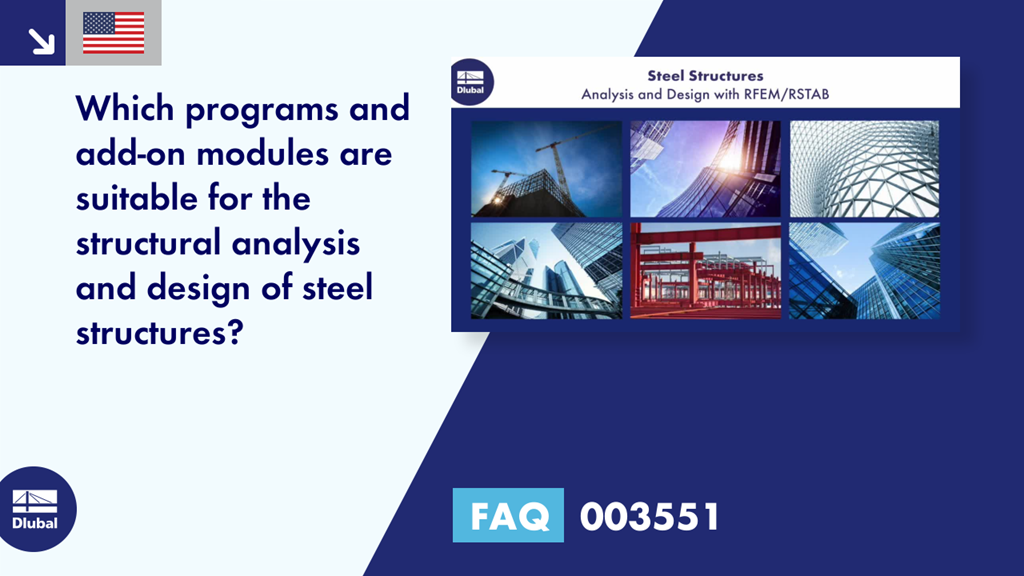Question:
Which programs and add-on modules are suitable for the structural analysis and design of steel structures?
Answer:
Both RFEM and RSTAB provide the solution. For both programs, there are numerous European and international standards as well as various add-on modules that facilitate your daily work in steel construction.
Main Programs RFEM and RSTAB
The main programs RFEM and RSTAB are used to define structures, materials, and actions. In addition to the option to create a spatial frame and truss structures, such as halls, RFEM allows for plate, wall, and shell structures, and thus provides a more versatile option. This pays off if it is necessary also to carry out design in other areas, such as solid construction.
Available Standards
EN 1993-1-1 (Eurocode 3),
AISC according to ANSI/AISC 360 (US standard),
SIA according to SIA 263:2013 (Swiss standard),
IS according to IS 800:2007 (Indian standard),
BS according to BS 5950-1:2000 (British standard) or BS EN 1993-1-1 (British Annex),
GB according to GB 50017-2003 (Chinese standard),
CSA according to CSA S16-09 and CSA S16-14 (Canadian standard),
AS according to AS 4100-1998 + Annex 1 - 1999 (Australian standard),
NTC-DF according to NTC-RCDF (2004) (Mexican standard),
SP according to SP 16.13330.2011 (Russian standard),
SANS according to SANS 10162-1:2011 (South African standard),
NBR according to ABNT NBR 8800:2008 (Brazilian standard),
HK according to the standard Code of Practice for the Structural Use of Steel 2011 (Buildings Department - Hong Kong)
RF-/STEEL - General stress analysis of steel surfaces and members
Add-on Modules for Steel Structures
The add-on modules complement the functionality of the main programs. For example, RF‑/STEEL EC3 allows you to perform the design of steel structures according to Eurocode 3. The RF‑STEEL Warping Torsion add-on module supplements the design according to Eurocode 3 by torsional buckling analyses with up to 7 degrees of freedom, unless it is a standard case of EC3.
Further specialized application areas are available, such as plastic design, a stability analysis according to the eigenvalue method, and the generation of geometric equivalent imperfections and pre-deformed equivalent models. Stand-alone modules, such as PLATE-BUCKLING, support your design of rigid or stiffened plates. The SHAPE-THIN program allows you to create any thin-walled cross-sections. Thus, the cross-section properties are determined and stress analyses or plastic designs can be performed.
You can design hinged or rigid connections using the RF‑/JOINTS add-on modules.
The stand-alone program CRANEWAY is available for the design of craneways.
Dynamic Analysis
If it is necessary to perform seismic analysis or vibration design of a building, the RF‑/DYNAM Pro add-on modules provide special tools for determining natural frequencies and mode shapes, analysis of forced vibrations, generation of equivalent loads, or nonlinear time history analysis.
If you have any questions about Dlubal Software programs, please do not hesitate to contact our sales department.
